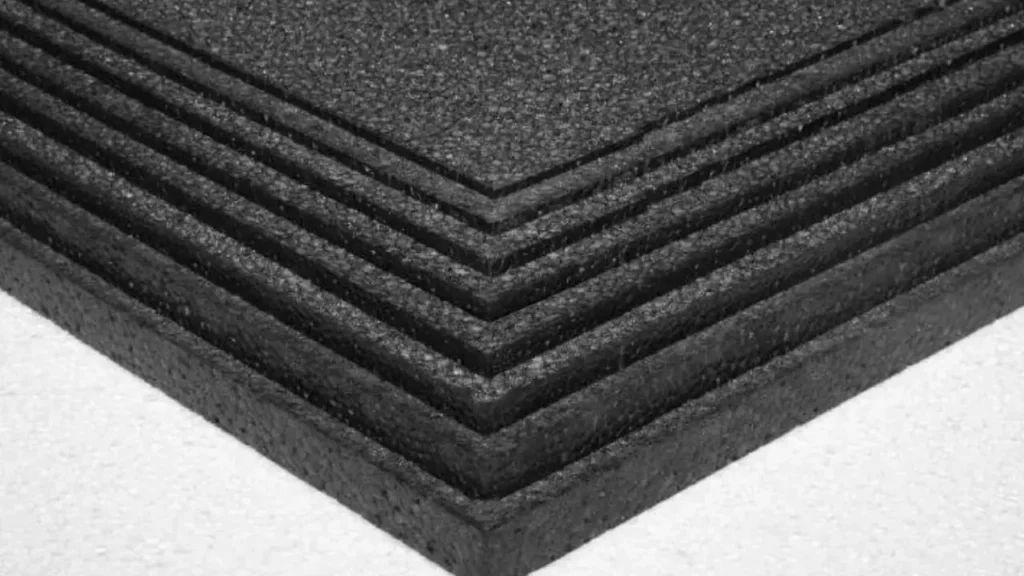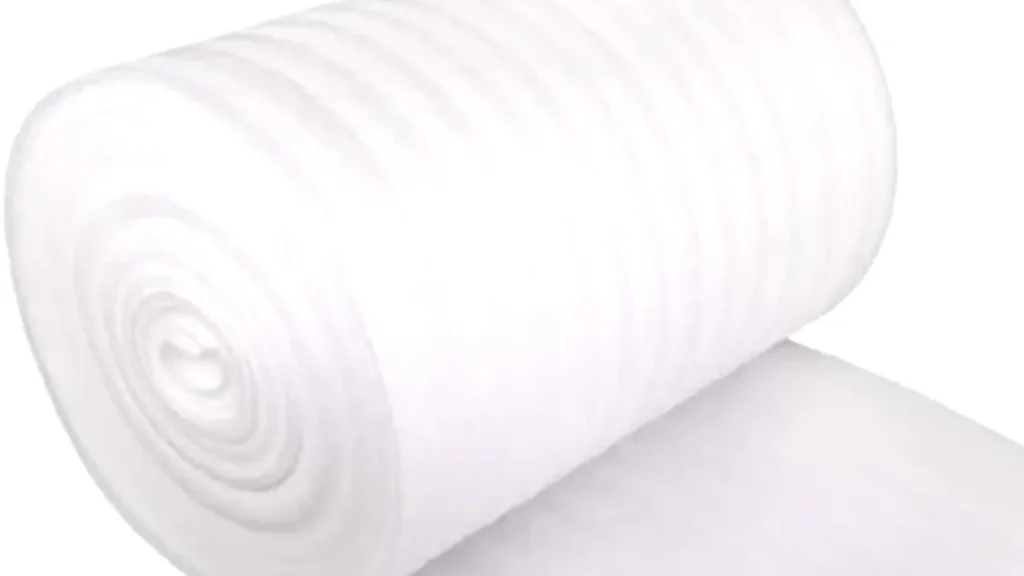Navigating the world of plastic foams can be complex, especially when comparing materials like EPP and PP foam. While both originate from polypropylene, their distinct manufacturing processes lead to significant differences in structure and performance. Understanding these variations is crucial for selecting the optimal material for your specific application, whether it demands superior impact resistance or general cushioning.
This blog post delves into the key distinctions between EPP (Expanded Polypropylene) and standard PP (Polypropylene) foam. We’ll explore their unique properties, manufacturing processes, and typical applications, providing you with a clear understanding of when to choose one over the other. Join us as we unravel the differences and highlight the strengths of each versatile foam.
What is EPP Foam

Expanded Polypropylene (EPP) foam is a highly versatile, closed-cell bead foam engineered from polypropylene resin. The manufacturing process involves expanding polypropylene beads using steam and pressure, causing them to fuse together into a lightweight yet robust material. This unique closed-cell structure gives EPP foam a remarkable combination of properties, including exceptional energy absorption, high impact resistance, and excellent durability, allowing it to withstand multiple impacts without significant deformation.
Beyond its mechanical strength, EPP foam also offers good thermal and sound insulation properties, as well as resistance to water and various chemicals. It is lightweight, contributing to overall product efficiency, and importantly, it is a recyclable material, aligning with sustainability efforts. These characteristics make EPP foam an ideal choice for a wide range of applications across diverse industries, where protection, durability, and weight efficiency are critical factors.
What is PP Foam

PP (Polypropylene) foam refers to a lightweight material created by introducing a foaming agent into polypropylene resin during processing. This can be achieved through various methods like extrusion, injection molding, or batch processing. The resulting foam consists of a cellular structure within the polypropylene matrix, which can be either closed-cell, where each cell is sealed, or open-cell, where the cells are interconnected. The specific properties of PP foam, such as density, flexibility, and strength, can be tailored by adjusting the manufacturing process and the type and amount of foaming agent used.
PP foam offers a versatile combination of properties, including being lightweight, chemically resistant to many solvents and acids, and having good thermal and electrical insulation characteristics. It can also provide cushioning and impact resistance, although typically to a lesser extent than EPP foam. Depending on the specific type and manufacturing, PP foam can be rigid or flexible and is often recyclable. Its affordability and ease of processing make it a widely used material in various packaging, insulation, and component applications across different industries.
EPP vs PP Foam
Choosing the right foam material is crucial for product performance and longevity. While both EPP (Expanded Polypropylene) and PP (Polypropylene) foams are derived from the same base polymer, their distinct processing methods result in materials with different characteristics, making them suitable for varying applications. Understanding these differences is key to informed decision-making.
Here are five aspects to consider when comparing EPP and PP foam:
Structure and Manufacturing
EPP foam is created by expanding individual polypropylene beads using steam and pressure, resulting in a closed-cell structure where the beads are fused together. This unique process leads to a material with consistent density and excellent energy absorption capabilities due to the interconnected yet distinct nature of the fused beads. In contrast, PP foam is produced through various foaming techniques applied to the polypropylene resin itself, such as extrusion or injection molding with blowing agents. This can result in either open-cell or closed-cell structures depending on the specific manufacturing method, and the foam may not exhibit the same uniform bead-based structure as EPP.
Energy Absorption and Impact Resistance
The closed-cell, fused-bead structure of EPP foam provides superior energy absorption and impact resistance compared to typical PP foams. When subjected to force, the EPP beads can compress and absorb the energy, returning to their original shape after impact, making it ideal for applications requiring repeated impact protection. While PP foams can offer some level of cushioning, they generally do not possess the same high level of resilience and ability to withstand multiple impacts without permanent deformation as EPP. This difference is a key factor in applications like automotive bumpers and protective packaging.
Density and Weight
Both EPP and PP foams are lightweight materials, but EPP often offers a better strength-to-weight ratio due to its efficient closed-cell structure. The density of both materials can be controlled during manufacturing to suit specific application needs. However, EPP’s ability to maintain structural integrity at lower densities while providing excellent energy absorption makes it advantageous in weight-sensitive applications, such as automotive parts, where reducing overall vehicle weight is crucial for fuel efficiency.
Chemical Resistance and Insulation
Both EPP and PP exhibit good chemical resistance to a wide range of substances, including oils, greases, and many solvents. They are also hydrophobic, meaning they resist water absorption. In terms of insulation, both foams offer thermal and sound insulation properties. However, the consistent closed-cell structure of EPP often provides slightly better thermal insulation compared to some PP foams, especially those with an open-cell structure, as the closed cells trap air more effectively, hindering heat transfer.
Recyclability and Sustainability
Both polypropylene and its foams, including EPP and PP, are recyclable materials. However, the specific recycling infrastructure and rates can vary depending on the region and the type of foam. EPP is often highlighted for its recyclability, and efforts are continuously being made to improve the recycling processes for all types of polypropylene foams, contributing to a more sustainable lifecycle for these materials. The environmental impact of each material should be considered based on the specific application and available end-of-life options.
Here’s a comparison table showing the key differences between EPP and PP foam:
| Feature | EPP Foam (Expanded Polypropylene) | PP Foam (Polypropylene) |
| Structure | Closed-cell, fused bead structure | Can be open or closed-cell, various manufacturing methods |
| Energy Absorption | Superior, high resilience to repeated impacts | Good, but generally lower than EPP |
| Impact Resistance | Excellent, withstands multiple impacts | Good, but less durable under repeated stress |
| Density & Weight | High strength-to-weight ratio, lightweight | Lightweight, density can vary |
| Chemical Resistance | Good resistance to many chemicals and water | Good resistance to many chemicals and water |
| Thermal Insulation | Good, often slightly better due to closed cells | Good, can vary depending on cell structure |
| Sound Insulation | Good | Good |
| Manufacturing | Expansion of polypropylene beads with steam | Extrusion, injection molding with blowing agents, etc. |
| Typical Applications | Automotive, protective packaging, sports helmets | General packaging, insulation, buoyancy aids |
| Recyclability | Recyclable | Recyclable |
How to Choose EPP and PP Foam
Choosing between EPP and PP foam requires a careful evaluation of your specific application needs and the desired performance characteristics. Consider the primary function of the foam – is it for protection, insulation, structural support, or a combination? Understanding the critical performance requirements will help narrow down your options.
For instance, if your application demands exceptional energy absorption and the ability to withstand multiple impacts without deformation, EPP foam is likely the superior choice.
To make the right decision, consider these key factors:
- Environmental Factors: Consider the recyclability and sustainability aspects of both materials and choose based on your environmental goals.
- Impact Protection: If your product or application requires high levels of shock absorption and resilience to repeated impacts, EPP’s closed-cell, fused-bead structure excels.
- Weight Sensitivity: For applications where weight is a critical factor and a high strength-to-weight ratio is needed, EPP often provides better performance.
- Cost Considerations: PP foams can sometimes be more cost-effective for applications where the extreme performance of EPP isn’t necessary.
- Insulation Requirements: Evaluate the thermal and sound insulation needs. While both offer insulation, EPP’s consistent closed-cell structure can be advantageous in certain scenarios.
Conclusion
While both EPP and PP foams originate from polypropylene, their distinct manufacturing processes lead to significant differences in structure and performance. EPP’s closed-cell, bead-based nature provides superior energy absorption, durability, and impact resistance compared to standard PP foams. This makes EPP ideal for demanding applications like automotive safety components and protective packaging.
Understanding these key distinctions is crucial when selecting the appropriate foam material for your specific needs. EPP’s enhanced properties often justify its use in applications where resilience and long-term performance are paramount. PP foam remains a cost-effective option for less demanding cushioning and insulation needs.
Looking for high-quality EPP foam for your wholesale needs? Contact us today to explore our range of customizable EPP solutions and benefit from our reliable supply and expert support. Let us help you find the perfect EPP foam for your applications.
